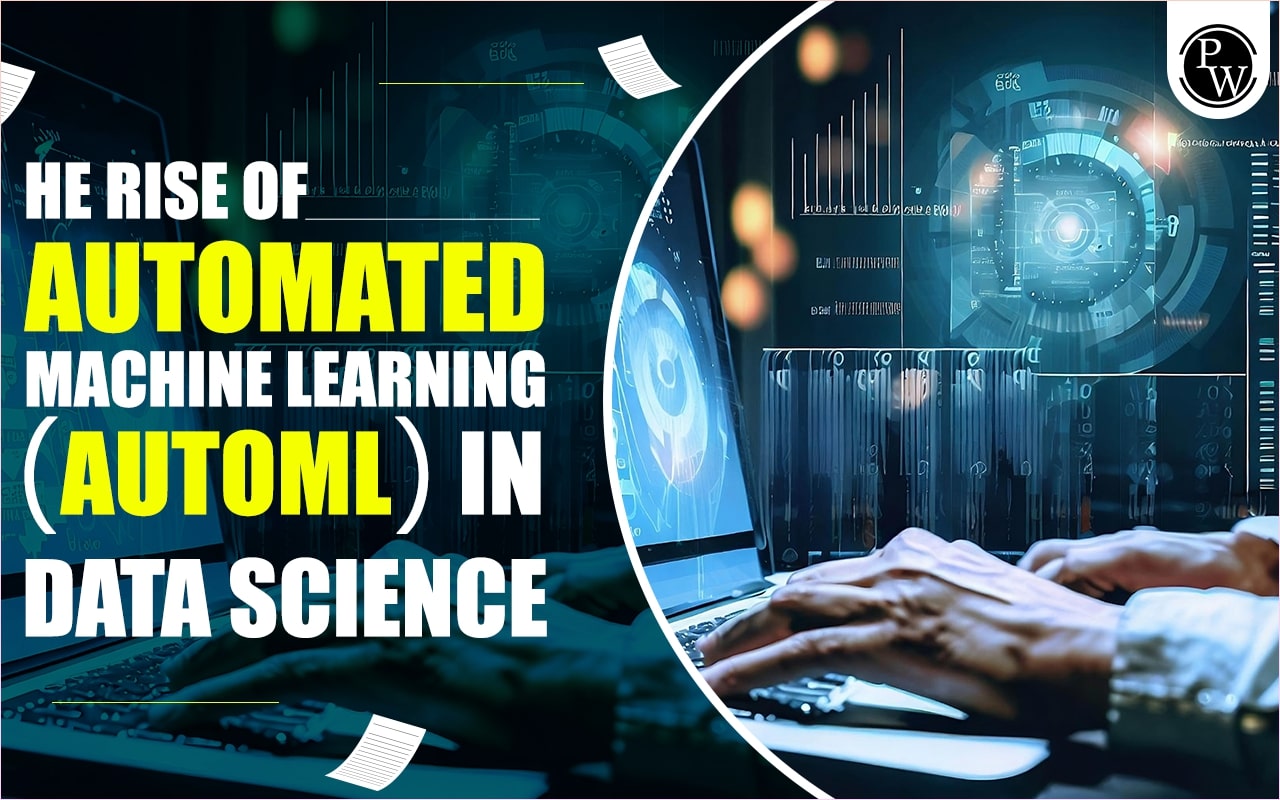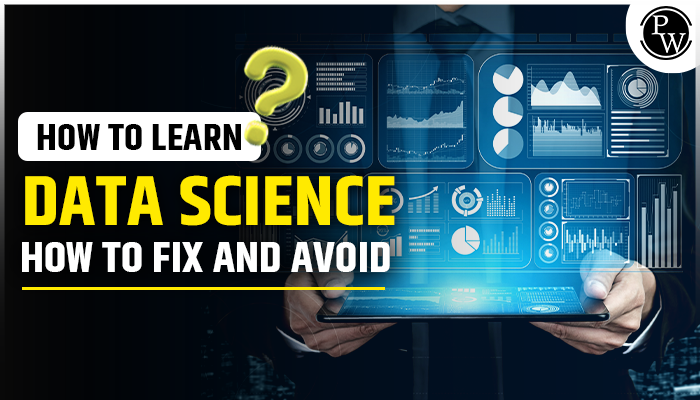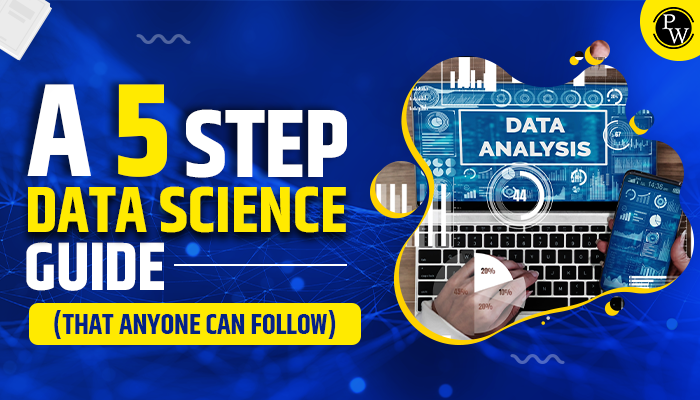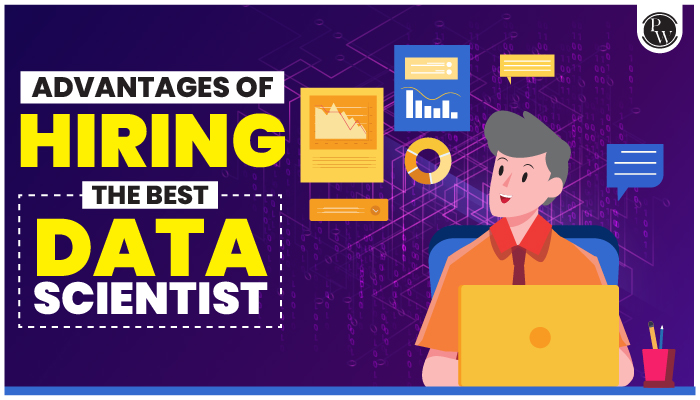Automated Machine Learning: In the challenging and fast-paced field of data science, a game-changer has emerged—Automated Machine Learning (AutoML). It’s not just a tool; it’s a bridge between expertise and accessibility. Imagine a future where building predictive models isn’t a feat for the initiated few but a journey open to all. In this blog, we’ll discuss everything about automated machine learning, how does it help, its examples, and much more!
If you want to give your data science career a jump start, a Decode Data Science with ML 1.0 course can help you a lot!
What Does a Data Scientist Do?
Data scientists are key in making decisions based on data. They collect, process, and analyse data for valuable insights. Traditionally, they manually choose datasets, algorithms, and tweak model settings for the best results. Yet, data scientists encounter various challenges. Huge datasets, intricate algorithms, and the necessity for continuous model improvement make their workflows time-consuming. Moreover, the scarcity of data science expertise creates a bottleneck, limiting the broader application of machine learning solutions.
The Intersection of Data Science and Automation

Automation helps tackle challenges for data scientists. By automating tasks, they can focus on strategic work like interpreting results. This is where AutoML comes in.
What Does Automated Machine Learning (AutoML) Do?
AutoML automates tasks done by data scientists, from data processing to model selection and deployment. Its main aim is to make machine learning accessible to all, democratising data-driven decision-making.
Key Components and Processes
AutoML comprises several key components, each contributing to the seamless automation of the machine learning pipeline.
- Data Pre-processing: AutoML tools handle the cleaning, transformation, and normalisation of data, streamlining the often tedious and error-prone data preparation phase.
- Feature Engineering: The process of selecting and transforming features is automated, ensuring that the model is fed with the most relevant and impactful information.
- Model Selection: AutoML algorithms pick the best machine learning models based on the problem, data, and performance.
- Hyperparameter Tuning: Optimising a model’s hyperparameters is crucial in machine learning. AutoML tools automate this, trying different setups to find the ideal combo.
- Model Deployment: Once a model is trained and optimised, AutoML facilitates the deployment process, making it easier to integrate the model into real-world applications.
Also read: How to Become a Data Scientist in 2023 in 5 Easy Steps?
How AutoML Differs from Traditional Machine Learning
While traditional machine learning requires extensive manual intervention and expertise, AutoML shifts the paradigm toward automation. This shift is not about replacing data scientists but empowering them. AutoML handles the repetitive and time-consuming aspects of the machine learning workflow, allowing data scientists to focus on the more creative and strategic aspects of their work.
Who Does AutoML Really Help?
Bridging the Gap for Non-Experts
AutoML benefits those not deeply into machine learning. Previously, diving into it needed knowledge of algorithms, programming, and stats. AutoML simplifies, letting diverse professionals tap into machine learning without the tech complexities.
Empowering Data Scientists
Contrary to concerns about automation replacing jobs, AutoML is a boon for data scientists. By automating routine tasks, data scientists can allocate more time to understanding the nuances of their data, interpreting model results, and deriving actionable insights. This shift from a manual, repetitive process to a more strategic and analytical role enhances the value that data scientists bring to the table.
Boosting Productivity and Efficiency
AutoML’s ability to automate repetitive tasks significantly accelerates the machine learning pipeline. Tasks that used to require weeks or months can now be done much faster. This boosts efficiency and lets organisations test and try out ideas more swiftly, promoting innovation and adaptability in the ever-changing field of data science.
Automated Machine Learning Tutorial
Setting Up Your Environment
Embarking on your journey into Automated Machine Learning (AutoML) begins with the essential step of setting up your environment. Depending on the AutoML platform or tool you choose, this might involve installing specific libraries, frameworks, or accessing cloud-based services.
Installation:
Begin by installing the AutoML tool of your choice. Popular options include Google AutoML, Microsoft Azure AutoML, and H2O.ai. Follow the installation instructions provided by the respective tool’s documentation.
Environment Configuration:
Configure your programming environment to ensure compatibility with the chosen AutoML tool. This may involve setting up Python environments, managing dependencies, and verifying that your system meets any hardware or software requirements.
Cloud Integration (Optional):
If you opt for a cloud-based AutoML solution, such as Azure AutoML, you’ll need to integrate your environment with the cloud platform. This typically involves creating an account, configuring authentication, and ensuring proper connectivity to cloud services.
Understanding Data Preparation in AutoML
Data preparation is a crucial phase in any machine learning project, and AutoML simplifies this process by automating various tasks.
Data Loading:
Load your dataset into the AutoML tool. This could be a structured dataset in CSV format, a database connection, or data stored in cloud storage. The tool should provide intuitive ways to import and explore your data.
Data Exploration:
Explore your dataset to gain insights into its structure, distribution, and potential challenges. AutoML platforms often offer visualisation tools that help you understand the characteristics of your data, making informed decisions during subsequent stages.
Data Cleaning:
AutoML tools automate the cleaning of data by handling tasks such as missing value imputation, outlier detection, and data normalisation. This ensures that your data is in a suitable format for model training.
Model Selection and Configuration
AutoML platforms simplify the often complex process of selecting and configuring machine learning models.
Model Selection:
AutoML algorithms intelligently choose from a pool of predefined machine learning models based on the nature of the problem, data characteristics, and performance metrics. This eliminates the need for manual selection and allows the tool to adapt to the unique aspects of your data.
Model Configuration:
Once a model is selected, the AutoML tool automatically configures the model parameters, such as hyperparameters, to optimise performance. This involves experimenting with different configurations to find the combination that yields the best results.
Hyper parameter Tuning
Fine-tuning the hyper parameters of a machine learning model is a critical step for achieving optimal performance. AutoML tools automate this process, relieving users from the tedious task of manually adjusting hyperparameters.
Automated Search:
AutoML algorithms conduct an automated search over the hyperparameter space, exploring different configurations to find the combination that maximises the chosen performance metric. This iterative process is often guided by optimization algorithms that efficiently navigate the parameter landscape.
Performance Evaluation:
Throughout the hyperparameter tuning process, the AutoML tool continuously evaluates the performance of different model configurations. This evaluation is based on specified metrics, such as accuracy or precision, and helps the tool converge towards the most effective hyperparameter values.
Model Deployment
Deploying a machine learning model into a real-world environment is a crucial step that AutoML platforms streamline.
Deployment Options:
AutoML tools typically provide straightforward deployment options. Users can choose to deploy models as web services, APIs, or integrate them into existing applications. The deployment process is designed to be user-friendly, even for those without extensive deployment expertise.
Scalability and Integration:
AutoML tools, especially those integrated with cloud platforms, offer scalability and seamless integration with other services. This ensures that deployed models can handle varying workloads and interact with other components of your data science or business ecosystem.
Also read: Types Of Regression Analysis In Machine Learning
Automated Machine Learning in Python
Popular Python Libraries for AutoML
Python’s extensive ecosystem of libraries has played a significant role in the widespread adoption of machine learning. Several libraries specifically cater to AutoML, simplifying the implementation of automated processes in Python-based workflows. Some noteworthy libraries include:
- Auto-sklearn: A powerful library that combines the simplicity of scikit-learn with automated machine learning capabilities.
- TPOT (Tree-based Pipeline Optimization Tool): An automated machine learning tool that optimises machine learning pipelines using genetic programming.
- H2O.ai: H2O.ai provides AutoML capabilities through its H2O AutoML platform, allowing users to build models without extensive machine learning expertise.
Integrating AutoML into Python-based Workflows
AutoML libraries seamlessly integrate into existing Python-based workflows, allowing users to leverage the rich ecosystem of Python for tasks such as data manipulation, visualisation, and model interpretation. This integration ensures a smooth transition for data scientists accustomed to working in Python environments.
Automated Machine Learning Examples
Real-world Use Cases
Finance: Fraud Detection
- Challenge: Detecting fraudulent transactions in large datasets.
- AutoML Solution: AutoML tools, such as those offered by H2O.ai, can automatically process and analyse vast amounts of transaction data to identify patterns indicative of fraudulent activities. This not only enhances the accuracy of fraud detection but also reduces the time required to adapt to evolving fraud patterns.
Also check: How Machine Learning Helpful in Finance 2023
Healthcare: Disease Prediction
- Challenge: Predicting the likelihood of diseases based on patient data.
- AutoML Solution: AutoML platforms, like Google AutoML, can analyse patient records, genetic data, and other relevant information to predict the probability of diseases such as diabetes or cardiovascular conditions. This aids healthcare professionals in early intervention and personalised treatment planning.
E-commerce: Customer Segmentation
- Challenge: Understanding and categorising diverse customer segments.
- AutoML Solution: AutoML tools, such as TPOT, can automate the process of customer segmentation by analysing purchasing behaviour, demographics, and other relevant factors. This enables e-commerce businesses to tailor marketing strategies and offerings to specific customer groups.
Success Stories
Kaggle Competitions
Many Kaggle competition winners attribute their success to leveraging AutoML. By automating the model selection and hyperparameter tuning process, participants can rapidly iterate and optimise their models, gaining a competitive edge in these data science competitions.
Zillow: Predicting Home Prices
Zillow, a real estate company, implemented AutoML to predict home prices accurately. By automating the feature engineering and model selection processes, Zillow was able to improve the accuracy of its price predictions, providing more reliable information to homeowners and buyers.
Industries Benefiting from AutoML
Retail
AutoML is used in retail for demand forecasting, inventory management, and personalised marketing. By automating the analysis of customer behaviour and market trends, retailers can optimise their operations and offer tailored promotions to customers.
Manufacturing
In manufacturing, AutoML is applied for predictive maintenance, quality control, and process optimization. By analysing sensor data and historical performance, manufacturers can predict equipment failures, reduce downtime, and improve overall efficiency.
Telecommunications
AutoML is employed in telecommunications for network optimization, customer churn prediction, and fraud detection. By automating the analysis of network data and customer behaviour, telecom companies can enhance service quality and customer satisfaction.
Automated Machine Learning Advantages and Disadvantages
Pros of AutoML
Time Savings
The automation of repetitive tasks significantly reduces the time required for developing and deploying machine learning models. This accelerates the overall project timeline and enables organisations to respond quickly to changing business needs.
Increased Accessibility
AutoML makes machine learning accessible to individuals with varying levels of expertise. This democratisation of machine learning empowers non-experts to harness the power of data-driven insights, fostering innovation across diverse fields.
Improved Model Performance
AutoML algorithms are designed to explore a wide range of models and hyperparameter configurations, often leading to superior model performance. This can be particularly beneficial for users who may not have the expertise to manually fine-tune models.
Cons of AutoML
Over Reliance on Automation
A potential drawback of AutoML is the risk of overreliance on automation. Users may lack a deep understanding of the underlying algorithms and processes, leading to challenges in interpreting model results and making informed decisions.
Lack of Customization
AutoML tools may not provide the same level of customization as manual model development. For highly specialised tasks or unique requirements, data scientists may prefer to have greater control over the entire machine learning pipeline.
Ethical Considerations
The automated nature of AutoML raises ethical concerns, especially in sensitive domains such as healthcare or finance. Ensuring fairness, transparency, and accountability in automated decision-making processes is a complex challenge that requires careful consideration.
Azure Automated Machine Learning
Overview of Azure AutoML
Microsoft Azure offers a comprehensive AutoML solution that seamlessly integrates with its cloud services. Azure AutoML simplifies the end-to-end machine learning process, allowing users to build, train, and deploy models without extensive expertise.
Integration with Microsoft Azure Services
Azure AutoML leverages the scalability and flexibility of Microsoft Azure, providing users with access to powerful computing resources and storage. This integration facilitates the handling of large datasets and complex machine learning tasks, making it an attractive option for organisations invested in the Microsoft ecosystem.
AutoML Tools
Overview of Popular AutoML Tools
Google AutoML
Google AutoML is a cloud-based, user-friendly platform that offers a suite of tools for automating various machine learning tasks. It caters to a broad audience, including non-experts and seasoned data scientists. The platform provides solutions for image classification, text recognition, and structured data prediction, making it versatile for a range of applications.
Features
- Vision AI: Enables users to build custom image classification models without extensive machine learning expertise.
- Natural Language Processing (NLP): Facilitates the creation of models for sentiment analysis, entity recognition, and other NLP tasks.
- Tables: Allows users to automate the process of building and deploying models for structured data, enhancing predictive analytics.
H2O.ai
H2O.ai provides an open-source AutoML platform that supports a variety of machine learning tasks. It is designed to be user-friendly while providing advanced capabilities for users who require more customization and control. H2O.ai focuses on automating model selection, hyperparameter tuning, and deployment, making it suitable for both beginners and experienced data scientists.
Features
- Driverless AI: A comprehensive AutoML solution that automates the entire data science workflow, including feature engineering, model selection, and hyperparameter tuning.
- H2O-3: An open-source platform that allows users to build machine learning models using distributed computing, making it scalable for large datasets.
- Explainability: H2O.ai emphasises model interpretability, providing users with insights into how models make predictions.
DataRobot
DataRobot is a comprehensive AutoML platform that caters to users with varying levels of expertise. It is designed to automate the end-to-end machine learning process, from data preparation to model deployment. DataRobot emphasises usability, allowing users to build models without delving into the intricacies of machine learning algorithms.
Features
- Automated Data Preparation: DataRobot automates the cleaning and transformation of datasets, streamlining the data preparation phase.
- Model Interpretability: The platform provides tools for understanding and interpreting model predictions, addressing the critical need for transparency in machine learning.
- Automated Feature Engineering: DataRobot automates the process of selecting and transforming features, optimising the model-building process.
Feature Comparison
Choosing the right AutoML tool requires a careful consideration of features and capabilities. While these tools share common goals, there are nuances in their offerings that may align differently with user requirements. A feature comparison can aid in making an informed decision:
Ease of Use
- Google AutoML: Known for its user-friendly interface and accessibility, making it suitable for users with varying levels of expertise.
- H2O.ai: Offers a balance between usability and advanced capabilities, providing options for both beginners and experienced users.
- DataRobot: Prioritises usability, with a focus on automating complex machine learning processes without requiring extensive user intervention.
Scalability
- Google AutoML: Leverages the scalability of Google Cloud, ensuring the handling of large datasets and computationally intensive tasks.
- H2O.ai: Provides an open-source platform (H2O-3) that is scalable for distributed computing, accommodating large datasets and complex models.
- DataRobot: Offers scalability for handling diverse machine learning tasks, making it suitable for projects of varying sizes.
Customization
- Google AutoML: Offers customization options within its predefined tasks but may have limitations for users seeking extensive customization.
- H2O.ai: Provides flexibility and control for users who require customization in terms of algorithms, hyperparameters, and model interpretation.
- DataRobot: Balances automation with customization, allowing users to intervene in the model-building process if desired.
Choosing the Right Tool for Your Needs
Selecting the most suitable AutoML tool depends on several factors, including the nature of the task, user expertise, and specific requirements. Considerations for choosing the right tool include:
User Expertise
Choose a tool that aligns with the expertise of the users. Google AutoML is suitable for non-experts, while H2O.ai and DataRobot cater to a broader audience, including experienced data scientists.
Project Complexity
Assess the complexity of the machine learning task. For simple tasks with predefined solutions, Google AutoML may suffice. For more complex and customizable projects, H2O.ai and DataRobot offer greater flexibility.
Integration
Consider the integration capabilities with existing workflows and systems. Google AutoML integrates seamlessly with Google Cloud, while H2O.ai and DataRobot are designed to work in diverse environments.
Scalability Requirements
Evaluate the scalability requirements of the project. If handling large datasets or computationally intensive tasks is crucial, tools like Google AutoML and H2O.ai with distributed computing capabilities may be preferred.
Also read: Data Science vs. Machine Learning: What’s the Best?
Conclusion
In the dynamic realm of data science, Automated Machine Learning (AutoML) has revolutionised workflows, making machine learning accessible and empowering experts and novices alike. From simplifying processes to enhancing decision-making, AutoML’s impact spans diverse industries. Real-world examples showcased its versatility, while major tools like Google AutoML, H2O.ai, and DataRobot provide unique solutions. As we navigate the advantages, it’s crucial to address ethical considerations and interpretability challenges. Looking forward, the fusion of human expertise and automation promises further innovation, shaping a future where the benefits of machine learning are within reach for all.
Become a data science expert and open doors to a world of possibilities with the PW Skills Decode Data Science with ML 1.0. Our comprehensive program covers all aspects of data science, from programming and statistics to machine learning and cloud computing. Enroll now and gain the skills you need to become an invaluable asset to any organisation.
FAQs
How do AutoML tools address the challenge of customer churn prediction in the telecommunications industry?
AutoML tools analyse customer usage patterns and service interactions to predict customer churn in the telecommunications industry. This enables organisations to implement targeted retention strategies.
Are there notable success stories from Kaggle competitions that utilised AutoML?
Yes, many Kaggle competition winners attribute their success to leveraging AutoML. The automation of model selection and hyperparameter tuning allows participants to iterate and optimise models quickly, gaining a competitive edge.
How does Azure AutoML integrate with Microsoft Azure services?
Azure AutoML seamlessly integrates with Microsoft Azure services, leveraging the scalability and flexibility of the Azure cloud. This integration facilitates the handling of large datasets and complex machine learning tasks.
What role does AutoML play in Zillow's prediction of home prices?
Zillow implemented AutoML to predict home prices accurately by automating the feature engineering and model selection processes. This resulted in improved accuracy of price predictions for the real estate company.
Can AutoML tools be used for more than one type of machine learning task?
Yes, AutoML tools are versatile and can be applied to various machine learning tasks, including classification, regression, and clustering. They often provide solutions for a range of tasks within a single platform.




